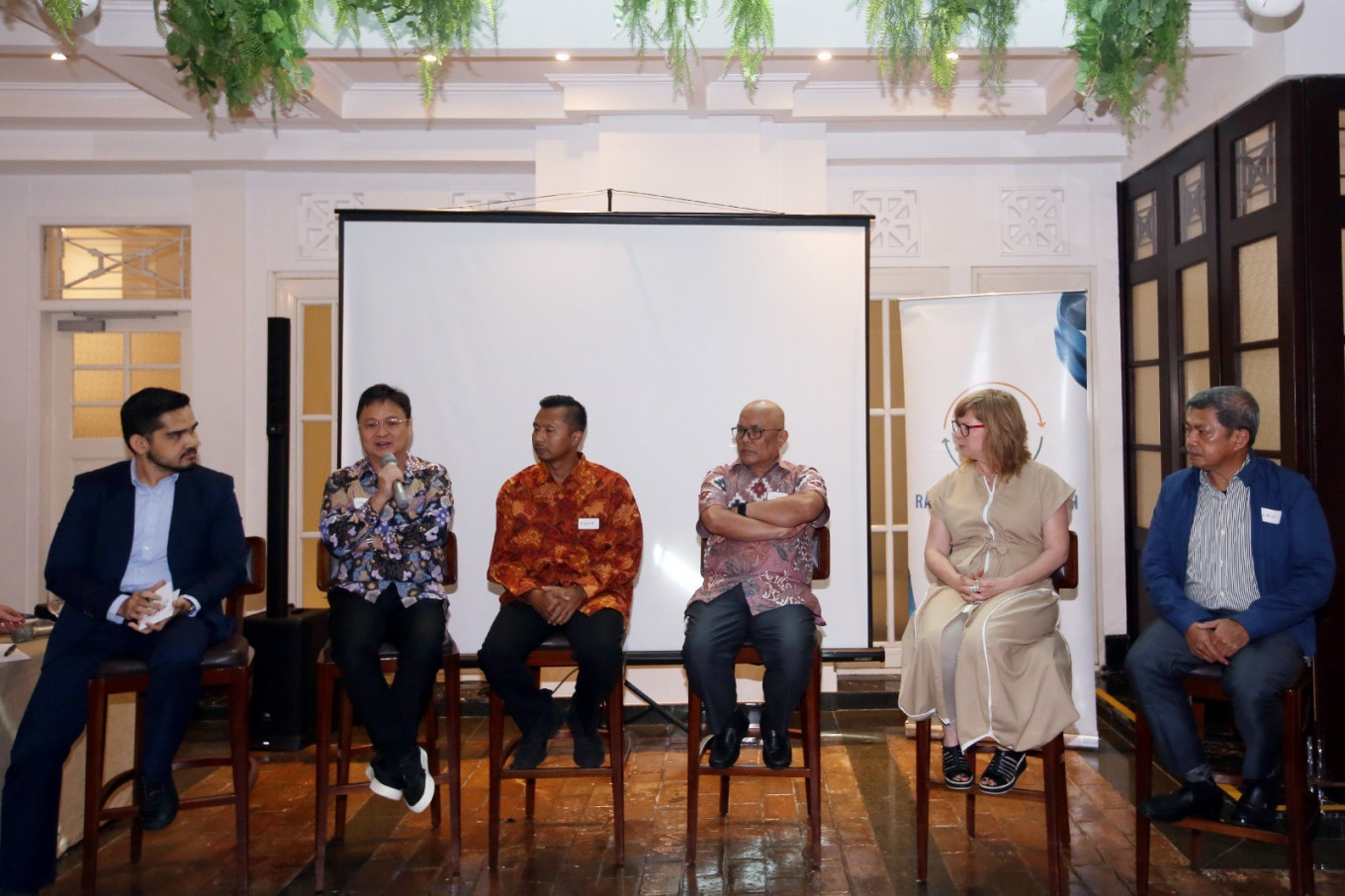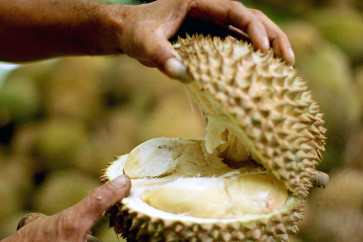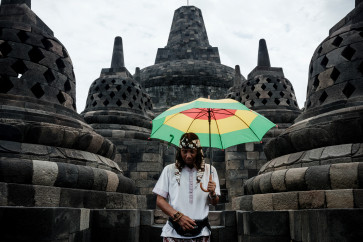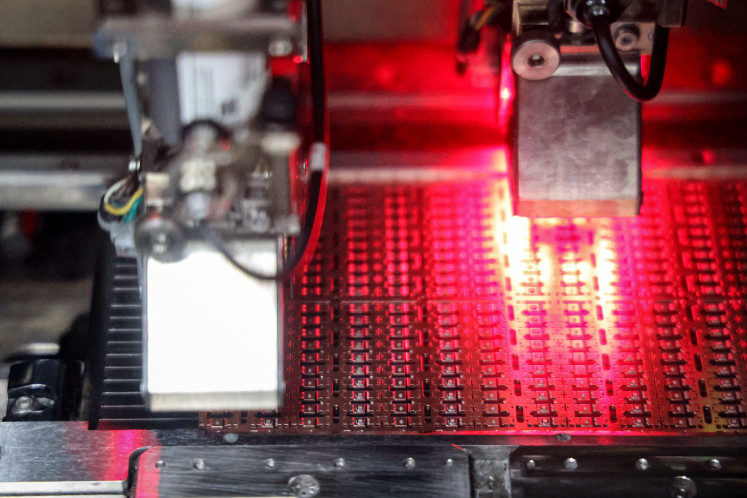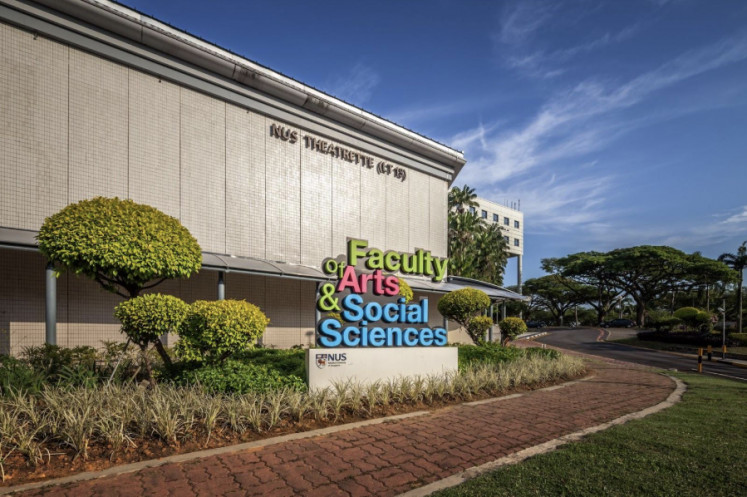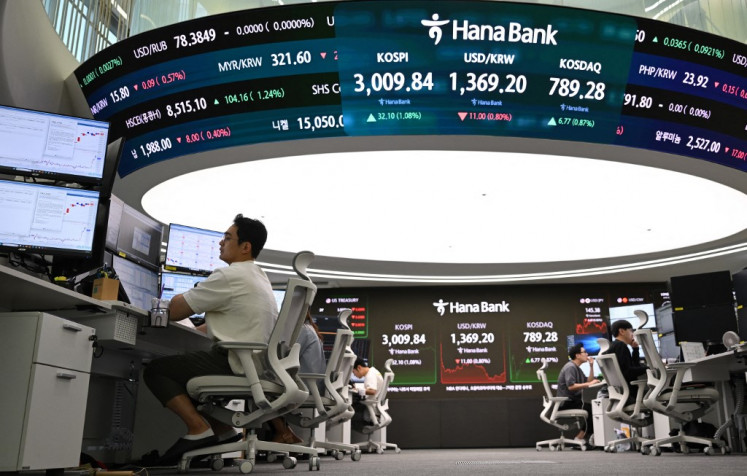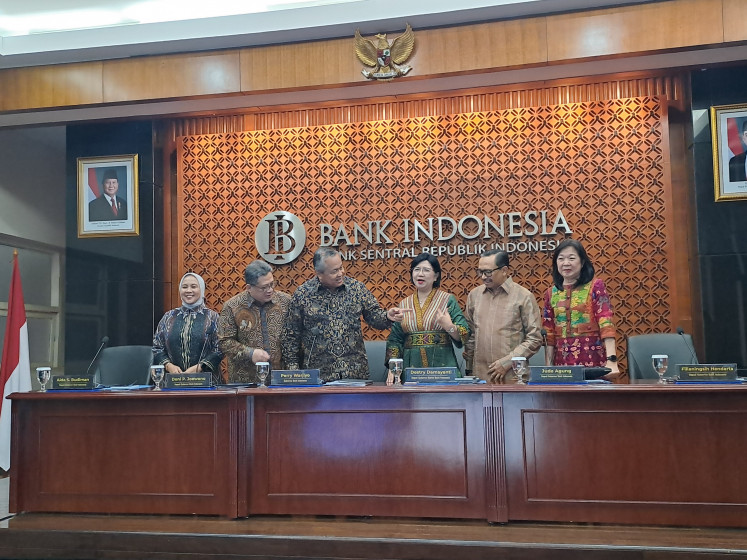Popular Reads
Top Results
Can't find what you're looking for?
View all search resultsPopular Reads
Top Results
Can't find what you're looking for?
View all search resultsRoadmap to 2050: Exploring Circular Textiles in Indonesia and Beyond
The Indonesian textile industry is expected to produce 3.9 million tonnes of textile waste in 2030, according to a 2021 report by the National Development Agency (Bappenas).
Change text size
Gift Premium Articles
to Anyone
T
he Indonesian textile industry is expected to produce 3.9 million tonnes of textile waste in 2030, according to a 2021 report by the National Development Agency (Bappenas). With 92 million tonnes of textile waste created each year, and the number set to rise to over 134 million tonnes by 2030, some argue that the current linear industry model is not sustainable.
One solution often proposed by both academics and industry players is the circular economy model, where existing materials are kept inside a closed loop for as long as possible in order to limit the extraction of new resources.
As an increasingly aware global community looks toward the year 2050 for climate targets, the fashion and textile industries are also obliged to set their own goals. Still, in an industry of that scale, envisioning a fully circular economy may seem like a distant dream.
Cofounded in 2020 by Amsterdam-based nonprofit Circle Economy, University Arts London Centre for Circular Design and United Kingdom-based Worn Again Technologies, the World Circular Textiles Day explores circularity progress from around the world across three themes: products and services, materials and people, to achieve full circularity in textiles by 2050.
Even so, some approaches toward a circular economy may work differently in different parts of the world due to factors such as culture and economic conditions. In this regard, circularity can only be achieved by working closely with different stakeholders around the world.
To highlight the Indonesian textile industry’s journey to an entirely sustainable and circular business model, the WCTD collaborated for a workshop on circularity with Rantai Tekstil Lestari (RTL), an association of like-minded stakeholders from the Indonesian textile and fashion industry with a focus on sustainability.
Held at The Hermitage Hotel in Jakarta on May 8, the Roadmap to 2050: Materials, Product & Services and People workshop aimed to establish a circularity tool kit to support the global textile and fashion roadmap by engaging Indonesian stakeholders and identifying the country’s challenges.
The findings from the workshop will serve as further insights for the WCTD symposium, which is held annually every Oct. 8.
In his opening remarks, RTL head Basrie Kamba acknowledged major barriers in implementing circularity, including a large upfront investment, smaller margins, as well as established consumer habits.
However, he continues, existing problems and issues will build up if stakeholders continue to neglect the issue, which will eventually cause the Indonesian textile industry to be left behind.
“We hope to obtain a [concrete] output, as otherwise global brands will continue to be pressured by customers while we could not meet their requirements,” Basrie, who is also the president director of sustainable viscose rayon producer Asia Pacific Rayon said.
WCTD cofounder and Circle Economy textiles program lead Gwen Cunningham explained the current linear economy had three phases: taking, making and wasting, adding the model was not specific to the textile industry.
In regards to fashion and textiles, she continues, the global industry produced 100 billion new items every year. At the same time, garments are being used less and less, where the average garment in Europe is worn seven or eight times before being disposed of.
“This is a shocking figure, but it demonstrates a global trend: in the last 15 years across the world, people started using their clothing for half as long as they used to. [...] It is estimated only 1 percent of textiles are being recycled back into clothing, and 85 percent of all textiles are being landfilled or incinerated,” she said.
“In our analysis totals, we are 7.2-percent circular, which shows we have a wide circularity gap.”
Despite the rather shocking numbers, fellow WCTD cofounder Cyndi Rhoades, who is also the founder of Worn Again Technologies, believes the circular economy is not a compromise, but rather an opportunity for the textile industry.
The WCTD developed its own definition of circularity for textiles, which is based on the three pillars of products and services, materials and people.
In the first pillar, products must be designed for circularity and kept in circulation for as long as possible, including through reusing, repairing and renting, which can be seen in the popularity of new businesses across the world as well as brands integrating these practices into their respective business models.
“Once products can no longer be re-worn as products, they go into material circularity. We define this as a time when materials are renewable, recyclable and kept in continual circulation,” she explained, noting the goal was for new textiles to be made from existing textile materials, whether through mechanical or chemical recycling processes.
With people, a circular economy can also create new job opportunities. Rhoades cited a 2021 Circular Economy report titled “Putting Circular Textiles to Work”, which found incinerating 10,000 tonnes of textile waste creates one job, while landfilling creates two jobs.
By contrast, recycling the same amount of textile waste creates 36 jobs, while refurbishing and reusing can create up to 300 jobs.
“It’s about commerce, it’s about making things, it’s about doing it better. We all can benefit if we catalyze, galvanize and work together,” she said.
Bappenas deputy for economic affairs Amalia Adininggar Widyasanti said the key to the industry’s growth was continued innovation.
“Keep discovering something new for our economy, for our industrialization. Let’s work together for a more sustainable textile industry in the future,” she said.
This article was published in collaboration with APRIL Group.

